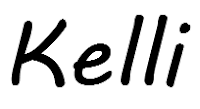In order for learning to happen, children must participate in it actively and reflect upon what was learned. Through experiences and thought, children build knowledge and these two functions create an optimal learning environment. For many classrooms, combining both of these pieces is difficult to do because of time. While most teachers get in sufficient activity, many do not have the time for to go back and reflect, or discuss, what was learned. Without this reflection piece, true learning is not accomplished.
Teachers should add reflection before, during and after learning activities. By asking open-ended questions (why, how, what questions), teachers can help students explore learning and knowledge more fully. Teachers can also give students the opportunity to reflect on what they learned through other tools such as writing in a journal, and guided reflection activities like KWL (What do we know, what do we want know, what have we learned). Teachers can also lead meaningful discussions giving students the chance to share their "inner speech". Students can reflect through digital and non-digital portfolios like slide shows and media presentations or through art work. By allowing students to be the storyteller, teachers are encouraging them to actively learn and reflect about our history. This creates a holistic approach to learning.


